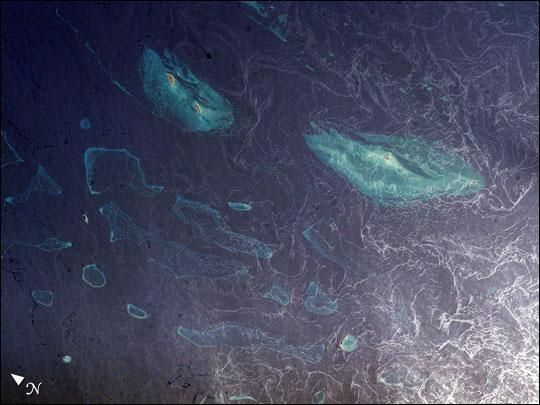
Unique Image Peers Above & Below Red Sea

This unique photograph of shallow Red Sea waters off the coast of Saudi Arabia gives us a glimpse of both the coral reefs under the surface, and the texture and movements of surface waters, according to a NASA statement.
On the left side of the image we see through the water column to the reefs below the surface. On the right side of the image, the sun reflects off of microscopic oily films formed by a combination of natural biological sources and human activities on the sea surface (visit Oceanography from the Space Shuttle for more info).
The films are concentrated by surface water movements and variably dampen surface capillary waves, which effect how the sun's light is reflected. This creates patterns of brighter and darker reflections when viewed from orbit. These patterns trace the complex surface water dynamics along the coast.
The Red Sea and Gulf of Aden include over 6,700 square miles (17,400 square kilometers) of coral reefs, or 6 percent of the world's total (World Atlas of Coral Reefs ). The World Resources Institute has estimated that 60 percent of the reefs in the Red Sea and Arabian Gulf are threatened by coastal development, overfishing, and the threat of oil spills by the heavy tanker traffic. The stretch of reefs shown here is near Qutu Island, south of Al-Qunfudhah, and is relatively isolated compared to other reefs in the region.
- New Set of Deep-Sea Vents Comes to Light
- Corals Moving North to Escape Warming
- Corals 'Severely Slimed' After Oil Spill, Sub Expedition Finds
Sign up for the Live Science daily newsletter now
Get the world’s most fascinating discoveries delivered straight to your inbox.












